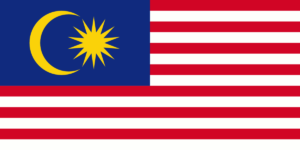History of Malaysia:
The Buddhist kingdom of Srivijaya, which reigned over Malaysia from the ninth through the thirteenth century, was one of the earliest civilizations to do so. Majapahit, a Hindu state, ruled after the Srivijaya. The next to arrive was the Muslim-ruled state of Malacca, which kicked off the spread of Islam in the region.
The Portuguese were the first Europeans to come. They took Malacca in 1511 and ruled the region for more than a century. In 1641, the Dutch would take control of the region, and in 1795, the British would take control. The industries of producing rubber and tin were created while the British were in charge.
Japan seized Malaysia during World War II. The nation started its transition toward independence not long after the conflict. The Federation of Malaya was established in 1957 by a number of the British possessions in the Malay Peninsula. In 1963, Malaysia was established and gained independence.
Information about Malaysia:
| Capital | Kuala Lumpur |
| Population | 34,378,837 (Source: 2023 worldometer) |
| Major Cities | Kuala Lumpur, Seberang Perai, Petaling Jaya, Johor Bahru, Shah Alam, George Town, Subang Jaya |
| Borders | Thailand in West Malaysia, and Indonesia and Brunei in East Malaysia |
| Gross Domestic Product (GDP) | $406,306,000,000 (2022 worldometer) |
| Currency | ringgit (MYR) |
Flag of Malaysia:
Malaysia Economy Key Industries:
Malaysia Major Industries: Peninsular Malaysia – rubber and oil palm processing and manufacturing, light manufacturing industry, electronics, tin mining and smelting, logging, timber processing; Sabah – logging, petroleum production; Sarawak – agriculture processing, petroleum production and refining, logging
Malaysia Agricultural Products: Peninsular Malaysia – rubber, palm oil, cocoa, rice; Sabah – subsistence crops, rubber, timber, coconuts, rice; Sarawak – rubber, pepper, timber
Malaysia Natural Resources: tin, petroleum, timber, copper, iron ore, natural gas, bauxite
Malaysia Major Exports: electronic equipment, petroleum and liquefied natural gas, wood and wood products, palm oil, rubber, textiles, chemicals
Malaysia Major Imports: electronics, machinery, petroleum products, plastics, vehicles, iron and steel products, chemicals
The Geography of Malaysia:
Total Size of Malaysia: 330,803 km² (source: wikipedia)
Geographical Low Point of Malaysia: Indian Ocean 0 m
Geographical High Point of Malaysia: Gunung Kinabalu 4,100 m
Climate of Malaysia: Tropical; annual southwest (April to October) and northeast (October to February) monsoons
General Terrain of Malaysia: coastal plains rising to hills and mountains
World Region or Continent of Malaysia: Southeast Asia
Geographical Coordinates: 2 30 N, 112 30 E
The People of Malaysia & Culture
Malaysia Government Type: constitutional monarchy
Malaysia Nationality: Malaysian(s)
Malaysia National Holiday: Independence Day/Malaysia Day, 31 August (1957)
Malaysia Independence: 31 August 1957 (from UK)
Malaysia National Symbol: tiger
Malaysia National Anthem or Song: Negaraku (My Country)
Malaysia Languages Spoken: Bahasa Melayu (official), English, Chinese (Cantonese, Mandarin, Hokkien, Hakka, Hainan, Foochow), Tamil, Telugu, Malayalam, Panjabi, Thai
Malaysia Religions: Muslim, Buddhist, Daoist, Hindu, Christian, Sikh; note – in addition, Shamanism is practiced in East Malaysia
Interesting Facts about Malaysia:
Malays make up roughly half of Malaysia’s estimated 31 million inhabitants. Chinese, Indians, and various indigenous communities are further notable ethnic groupings.
Before 2004, the Petronas Towers in Kuala Lumpur were the tallest buildings in the world. With 88 floors and a height of 451.9 meters (1,483 feet), the two towers remain the highest in the world.
Malaysia’s tallest mountain is Mount Kinabalu, which is situated on the island of Borneo. Mount Kinabalu rises to a height of 4,095 m (13,435 ft).
Malaysia has two different rainy seasons because of its proximity to the equator. The humidity level is high.
In Malaysia, the main agricultural commodities include rice, bananas, coconuts, cacao, pineapples, and chocolate.
Beef, chicken, seafood, noodles, peanuts, and chilli are typically found in Malaysian dishes.
The Malaysian flag was designed by Mohamad Hamzah, a 29-year-old architect who won the 1963 flag design contest.
Malaysia is the only country in the world to have territory on both the mainland of Southeast Asia and the islands that are situated between Asia and Oceania.
Sadly, there are currently just 350 Malayan Tigers left in the world, making the species critically endangered. The Malayan Tiger is a native of Malaysia.
The Tualang, which grows in Malaysia and has a base diameter of nearly 10 feet and a potential height of 262 feet, is one of the tallest tropical trees in the world.
The words “Malay” (referring to a group of people) and the Latin-Greek suffix “ia” combine to form the name Malaysia. The country’s name means “land of the Malay” in English.
The song that epitomizes Malaysia is Negaraku. It was once the anthem for the Perak region.
878 islands are under the control of Malaysia. Some islands are populated, while others are inaccessible due to distance.
Malaysia’s national flower is the hibiscus, also known as Hibiscus rosa-sinensis. Formally, the choice was made on July 28, 1960. The vibrant colors represent the strength and bravery of Malaysians.
Malaysia has a tropical rainforest climate, which means that from October through March, there is a lot of rain and warm, humid weather.
Tamil, Mandarin, and Bahasa Malaysia are the three main languages used in Malaysia. But overall, 137 different languages are spoken in the country.
“Salaam” is the standard spoken greeting in Malaysia. However, while meeting new people, persons of different races can also shake hands.
A Malaysian will bow slightly and place their right hand over their heart before shaking the other person’s right hand in a traditional greeting.
The skybridge that connects the Twin Towers is the tallest one on earth. The floors 41 and 42 contain it.


